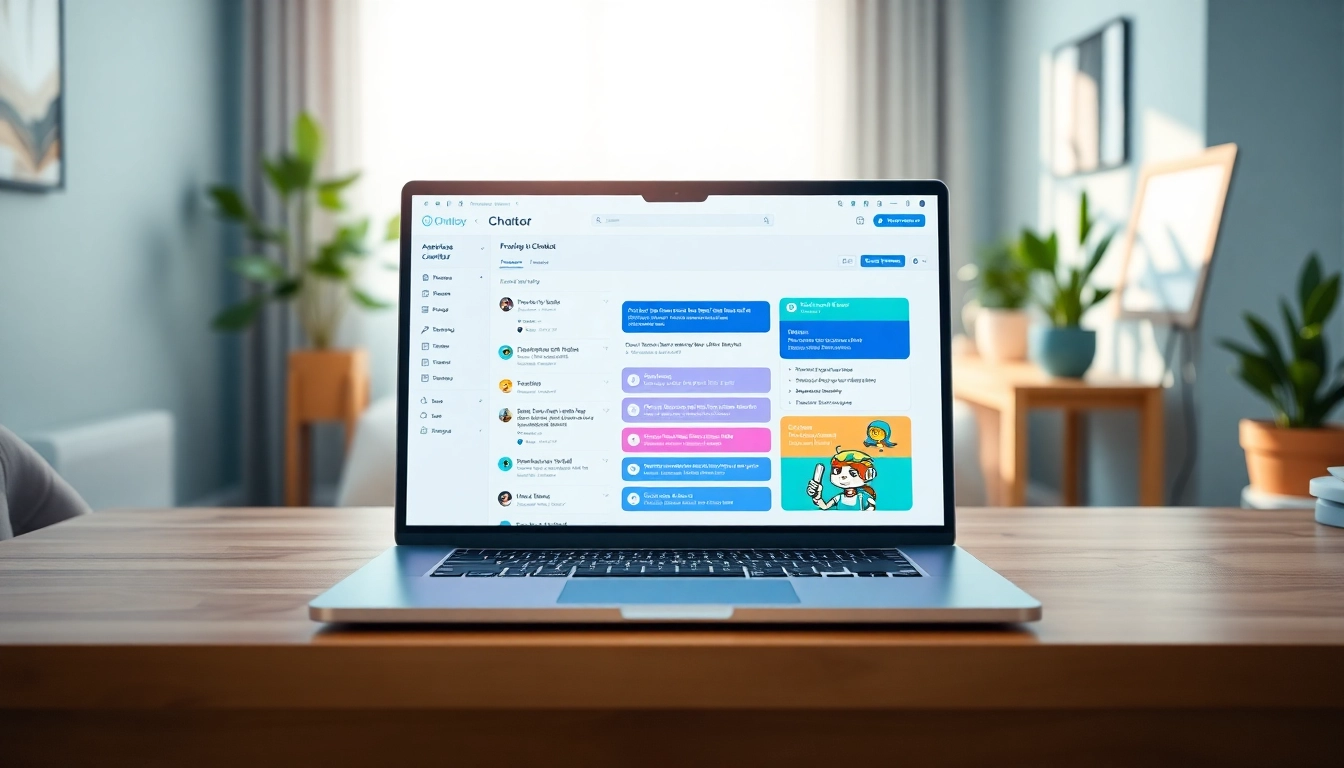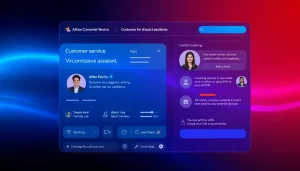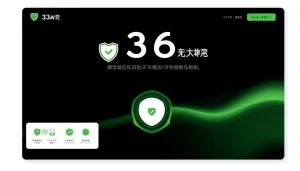Enhancing User Engagement with a Chatbot for Your Website
Understanding the Role of a Chatbot for Your Website
Chatbots have revolutionized the way businesses interact with their customers online. Rather than relying solely on traditional communication methods like emails and phone calls, companies are now utilizing chatbots to enhance user engagement and streamline communication processes. A chatbot for website serves as a digital assistant, automating responses and facilitating real-time conversations without human intervention. This article explores the importance of chatbots in a modern business context, how to choose the right one, implement it effectively, and measure its success.
What is a Website Chatbot?
A website chatbot is an AI-driven software designed to simulate human conversations through text or voice interactions. These bots can be programmed to respond to inquiries, guide users through processes, and even carry out transactions. Chatbots operate on various platforms, including social media, websites, and mobile applications, providing support and enhancing user experience without the wait times typically associated with human operators.
Benefits of Implementing a Chatbot
Incorporating a chatbot into your website can yield numerous advantages:
- 24/7 Availability: Chatbots provide support at any time of day, ensuring customers receive assistance whenever they need it, regardless of time zones.
- Improved Customer Service: Instant responses to inquiries can significantly enhance customer satisfaction and reduce frustration.
- Cost-Efficiency: By automating routine tasks, businesses can reduce the need for a large customer service team, ultimately lowering operational costs.
- Data Collection: Chatbots can gather valuable customer data, offering insights into preferences and behaviors, which can inform business strategies and marketing efforts.
How Chatbots Enhance User Experience
Chatbots contribute to a seamless user experience by ensuring that visitors to your site receive immediate answers to their questions. This instant gratification reduces bounce rates and encourages visitors to spend more time exploring your products or services. Furthermore, chatbots can be personalized to recommend products based on user preferences, ensuring a tailored experience that can lead to higher conversion rates.
Choosing the Right Chatbot for Your Website
Selecting the appropriate chatbot for your website involves understanding your business needs, your audience, and the various types of chatbots available in the market. Each type serves different purposes and functionalities.
Types of Chatbots Available
There are primarily two types of chatbots: scripted and AI-powered. Scripted chatbots operate based on a predefined set of responses, suitable for straightforward queries like FAQs. AI chatbots use natural language processing to understand and respond to user inquiries more conversationally, making them ideal for dynamic interactions.
Key Features to Look For
When choosing a chatbot, consider the following features to ensure you select a solution that will serve your business well:
- Natural Language Processing (NLP): A sophisticated NLP engine enables the chatbot to understand user input better and respond appropriately.
- Integrations: Ensure the chatbot can integrate with your existing systems (CRM, email marketing, etc.) for a seamless operational workflow.
- Multilingual Support: If you operate in multiple countries, a bot capable of supporting various languages is essential.
- Analytics and Reporting: Look for tools that provide insights into chatbot performance, user interactions, and overall effectiveness.
Assessing User Needs
Understanding your target audience is critical in selecting the right chatbot. Conduct surveys, analyze customer feedback, and review chat transcripts to identify common queries and pain points. This data will help you determine the functionalities your chatbot needs to effectively serve your customers.
Integrating a Chatbot into Your Website
Integrating a chatbot into your website requires a blend of technical skills and strategic planning to ensure a smooth implementation and optimal user experience.
Step-by-Step Implementation Guide
To successfully integrate a chatbot, follow these steps:
- Define Your Goals: Establish what you want to achieve with the chatbot (e.g., lead generation, support, sales).
- Select the Right Platform: Choose a chatbot platform that aligns with your technical capabilities and business needs.
- Design the Chat Flow: Map out how conversations will unfold, considering various user intents and pathways.
- Test Your Bot: Before going live, rigorously test your chatbot with a representative sample of users to gather feedback and refine responses.
- Launch and Monitor: Deploy the chatbot and constantly monitor its interactions, making adjustments as needed based on user feedback.
Best Practices for Integration
Implementing best practices can significantly strengthen the effectiveness of your chatbot:
- Keep It Simple: Ensure the chatbot is easy to interact with and does not overwhelm users with options or complex queries.
- Use Clear Language: Employ simple, straightforward language that resonates with your audience.
- Employ Human Handoffs: If the chatbot cannot resolve an issue, ensure a smooth transition to a human representative.
Common Integration Challenges
Even the best-planned chatbot integrations may encounter issues. Here are some common challenges and their solutions:
- Technical Difficulties: Integration issues may arise with existing systems. Work with your IT team or chatbot provider to troubleshoot and resolve these conflicts.
- Lack of User Engagement: If users do not interact with your chatbot, examine its placement on the website and consider pop-ups or proactive prompts to engage users effectively.
- Insufficient Training: A poorly trained chatbot can result in user frustration. Ensure your bot is regularly updated with new information and learns from past interactions.
Measuring the Success of Your Chatbot
After deploying your chatbot, it’s crucial to measure its performance to assess its effectiveness and identify areas for improvement.
Key Performance Indicators (KPIs)
Establishing KPIs will provide a clear framework for evaluating your chatbot’s performance. Key metrics to consider include:
- Engagement Rate: The percentage of visitors who interact with the chatbot. A higher rate indicates better visibility and relevance.
- Resolution Rate: The percentage of user inquiries resolved by the chatbot without human intervention, reflecting its competence.
- User Satisfaction Score: Collect feedback from users post-interaction to gauge satisfaction with the chat experience.
- Conversion Rate: Track how many conversations lead to sales or desired actions, providing insight into its effectiveness as a sales tool.
Tools for Monitoring Chatbot Performance
Monitoring your chatbot’s performance is easier with various analytics tools available. Some of the most effective include:
- Google Analytics: Integrating chatbot data with Google Analytics can provide comprehensive insights into user behavior and interactions.
- Chatbot-Specific Analytics: Utilize built-in analytics from your chatbot platform to track specific engagement and performance metrics.
- User Feedback Tools: Implement feedback forms or rating systems to gather direct user opinions on chatbot effectiveness.
Gathering User Feedback
Actively soliciting feedback from users can uncover insights into their perceptions of the chatbot, helping you refine its functionalities. Use surveys, ratings, or follow-up prompts after interactions to gain qualitative data and improve user satisfaction.
Case Studies: Success Stories with Chatbots
Real-world examples of businesses that have successfully implemented chatbots can provide valuable insights and lessons for your own strategy.
Businesses That Thrived with Chatbots
Many companies have experienced significant improvements in customer service and efficiency thanks to chatbots. For instance:
- Shopify: This e-commerce platform uses chatbots to assist with customer queries, improving their support response times and driving sales conversions.
- Sephora: The beauty retailer leverages chatbots to provide personalized product recommendations, enhancing the shopping experience and driving user engagement.
- Domino’s Pizza: Their pizza-ordering chatbot has transformed the way customers place orders, allowing for easy interaction through multiple channels.
Lessons Learned from Chatbot Implementations
Through these case studies, several key lessons emerge. For one, understanding user needs and preferences is paramount to successfully engaging them with chatbots. Additionally, including options for human involvement during more complex interactions can significantly enhance user satisfaction.
Future Trends in Chatbot Development
The chatbot landscape is constantly evolving, influenced by advancements in AI and user expectations. Key trends to watch include:
- Increased Personalization: Future chatbots will leverage advanced algorithms to provide even more personalized conversations, catering to individual user preferences.
- Voice-Activated Chatbots: The rise of voice-activated technologies will see chatbots integrate voice capabilities, offering a hands-free interaction model.
- Integration with Advanced Technologies: Expect to see more chatbot integrations with machine learning and AI, allowing for ever-more sophisticated interactions and improvements in natural language understanding.














Post Comment